Hanuman: The Revered Monkey God in Hindu Mythology
The revered monkey god Hanuman is one of the most iconic in Hindu mythology. He embodies unparalleled strength, unwavering devotion, and boundless...
Maya M. Tola 19 September 2024
The narrative of the Indian partition lingers in the secluded corners of memory and experience. The partition of India and Pakistan, and later Pakistan and Bangladesh, inflicted wounds that still impact the families of those affected. The post-colonial, feminist artist Pritika Chowdhry pays homage to the inhumane events of Indian history in her artistic practice. She also revisits the past in order to highlight untold as well as subjugated narratives.
As a grandchild of the Partition, I am a secondary witness and have been influenced by various retellings of the history of the Partition and the Partition riots. Operating from this location of post-memory, I have absorbed my family’s experiences of the Partition from the East and West sides.
In 2022, Unbearable Memories, Unspeakable Histories exhibited at South Asia Institute, Chicago. It displayed experiential art installations which are termed as anti-memorials to the unpleasant memories of the Indian partition. Each section of the space was a visual analogy to an event of the past, whether national or transnational. Using several materials, primarily of earthy tones, some weaved, some assembled, some manufactured, while some germinating from the pathos of time, the exhibition curated an essence of post-partition remnants.
Focusing on the Indian partition lines like the Radcliffe line (the marked border between India and Pakistan) and the Lines of Control in Kashmir, the visual of the demarcation was repeated in the form of stitches in Chowdhry’s artworks. Her installations were transnational, transgressing a particular story of a specific nation and comparing the narratives with historical events of other nations as well as reconciling it with fictional aspects.
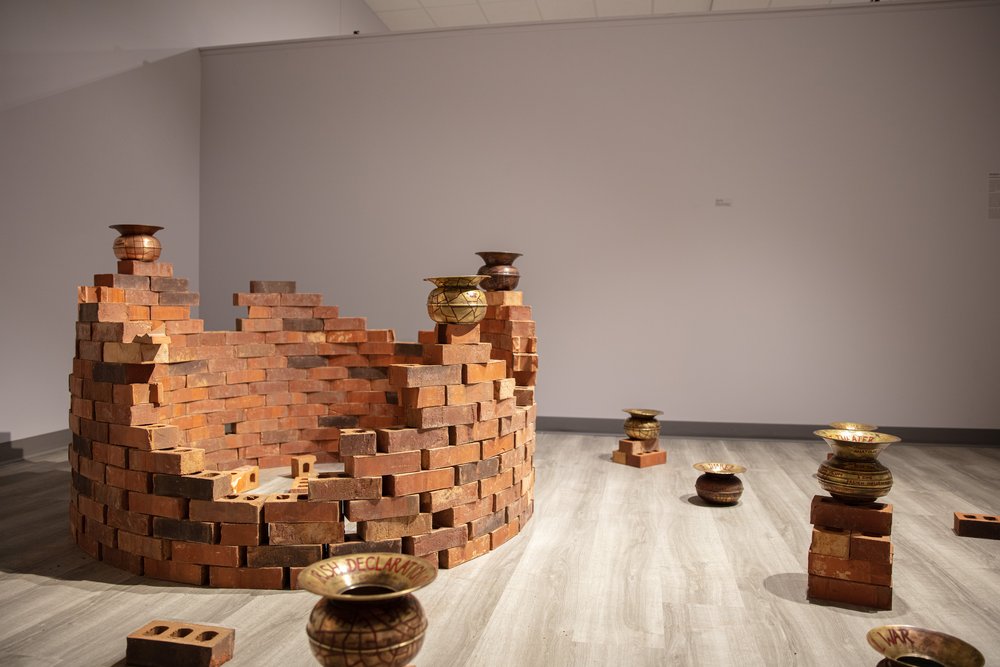
Installation view of Pritika Chowdhry’s An Archive of 1919: The Year of the Crack-Up, at the South Asia Institute, Chicago, IL, USA. Courtesy of the Institute.
For instance, the Archive of 1919, represented dispersed spittoons, a replicated form of a well, and a video montage. The spittoons were marked with the titles of rebellious events from different countries that occurred in the year 1919. These include the Irish War of Independence, the Versailles Treaty, the Third Anglo-Afghan War, the May Fourth Revolution in Tiananmen Square, and the Bloody Summer in Chicago, one of the worst race riots in America. Particularly stressing the Jallianwala Bagh massacre, the installations retell the tragedy that stands at the junction of rebellious revolt in the form of death.
During this massacre in 1919 at the Jallianwallah Bagh (ground), the English openly fired on Indians who were observing a peaceful protest. The wall-locked ground had only a few doors which were purposely shut by the English so that nobody could escape. Many of them committed suicide by jumping into a well. In addition, while comparing with simultaneous worldly events of the year, Chowdhry assimilated the concept of the spittoon from Salman Rushdie’s novel, Midnight Children.
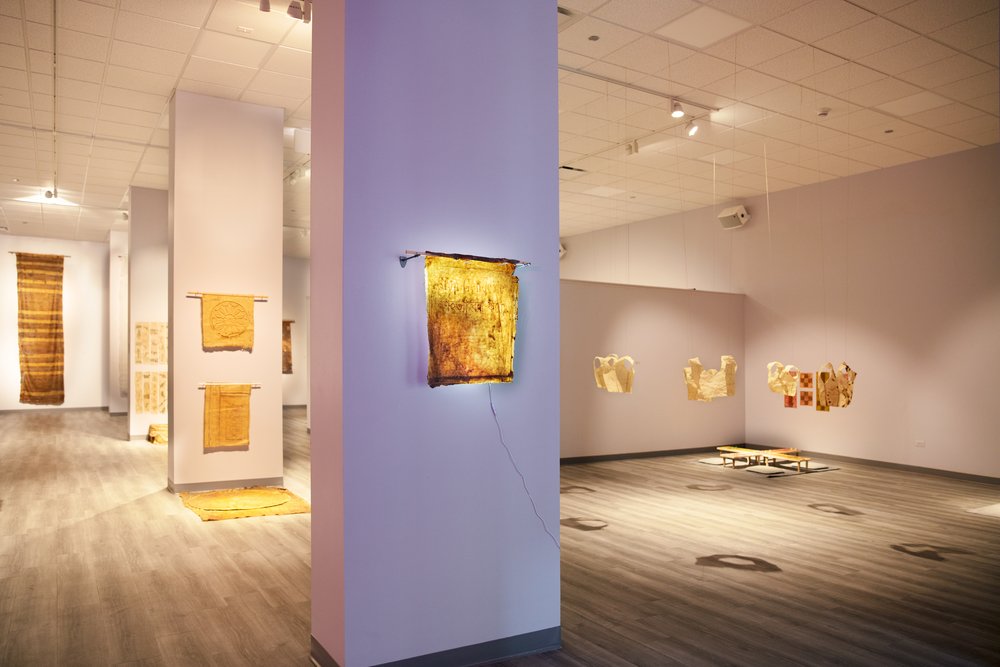
Installation view of Unbearable Memories, Unspeakable Histories, 2022, South Asia Institute, Chicago, IL, USA. Courtesy of the Institute.
Pritika Chowdhry initiated The Partition Anti-Memorial Project in 2007. It represents stories of Indian independence and the Bangladesh liberation war partially through tracing familial lineage and belonging. Chowdhry’s mother belonged to Karachi in present-day Pakistan, meanwhile her father’s family was from the region of Bengal, located in Bangladesh. Her familial association with partition, migration, and communal violence are triggering junctions to her art and the project which she termed Partition Art. However, the project is not limited to the Indian subcontinent. It also explores and compares partition narratives of diverse nations. Realizing the absence of mention of marginalized groups, women, and transitional connections, the first in the series was Queering Mother India.
Documenting, archiving, and re-evaluating the inherited experiences, Chowdhry believes in preserving histories and memories. Owing to the long time spent researching the project, the Online Partition Museum is a repository of exhibitions, counter-memory, and anti-memorial, among other representations.
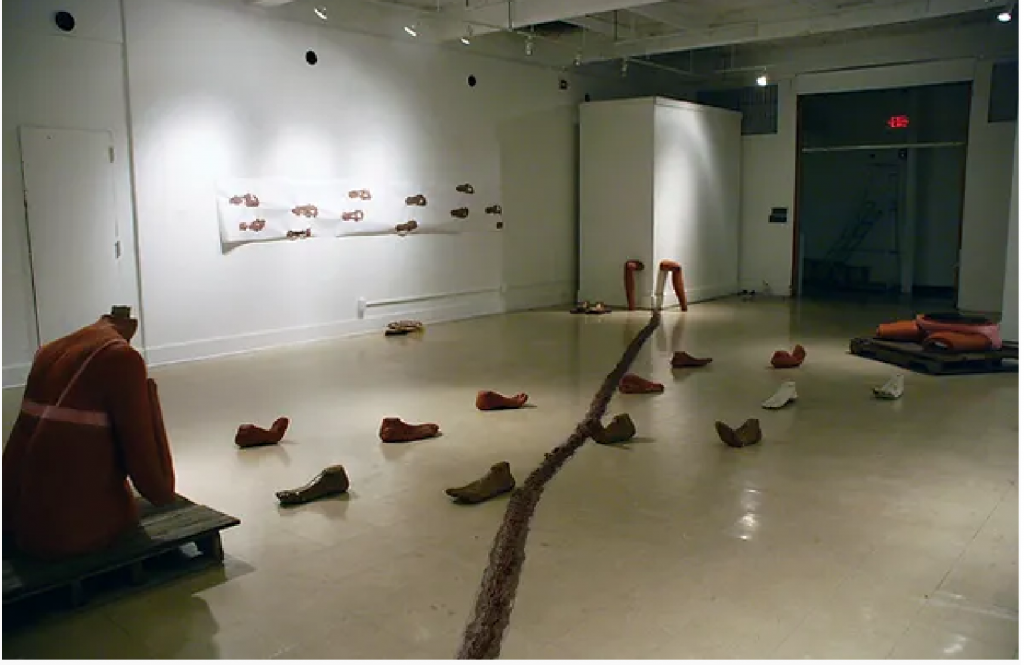
Pritika Chowdhry, Queering Mother India, 2007. Artist’s website.
Indian partition is termed the Holocaust of South Asia. India was declared a sovereign state, free from the British East India Company, on 15 August 1947. At the same time, Pakistan, which was then a part of India, was declared a separate nation on 14 August 1947. The border that separates the two nations was termed as the Radcliffe line. The same line was also marked in Bengal, dividing the state into east and west. While the east was allotted to Pakistan, it was later liberated as the nation of Bangladesh in 1971. The population of India, Pakistan, and Bangladesh was affected direly by these insensitive separations. The subcontinent observed a massive and rapid migration. It also caused immense communal violence throughout these countries. For example, 20 million were displaced, 2 million people died and approximately 300,000 women were kidnapped during the ensuing riots.
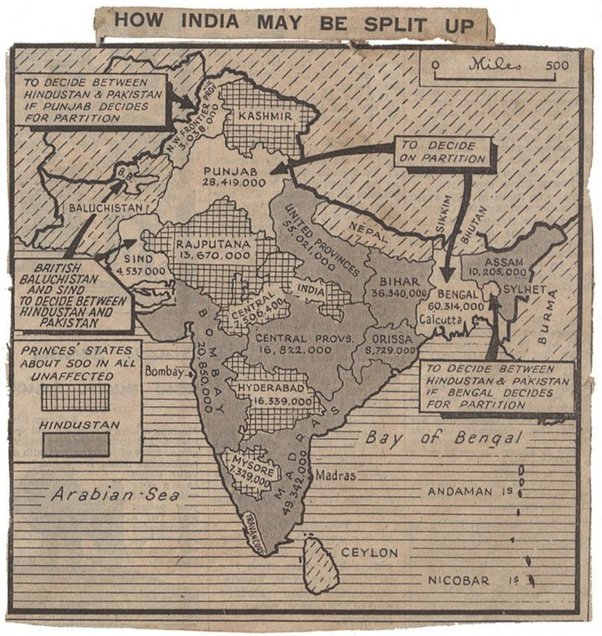
Map speculating on a possible division of India from the Daily Herald, 4th June 1947. Wikimedia Commons (public domain).
Chowdhry used a still of Indians jumping into the well during the Jallianwala Bagh massacre from the movie Rang de Basanti for the video montage in An Archive of 1919. But what are the impacts of the Indian partition or communal discrimination in the post-colonial era of colonized nations? Communal violence has become a propagandist tool in perpetuating the ruling politics with respect to the governance of India. The dyad of east and west left deep scars in the psychological conduct of colonized nations. While subverted narratives triggered Chowdhry’s project, the orally shared events from her family became the thread for weaving the anti-memorials. What are anti-memorials according to Chowdhry?
Anti-memorials aim not to console but to provoke, not to remain fixed but to change, not to be everlasting but to disappear, not to be ignored by passers-by but to demand interaction, not to remain pristine but to invite their own violation and not to accept graciously the burden of memory but to drop it at the public’s feet.
South Asia Institute’s website.
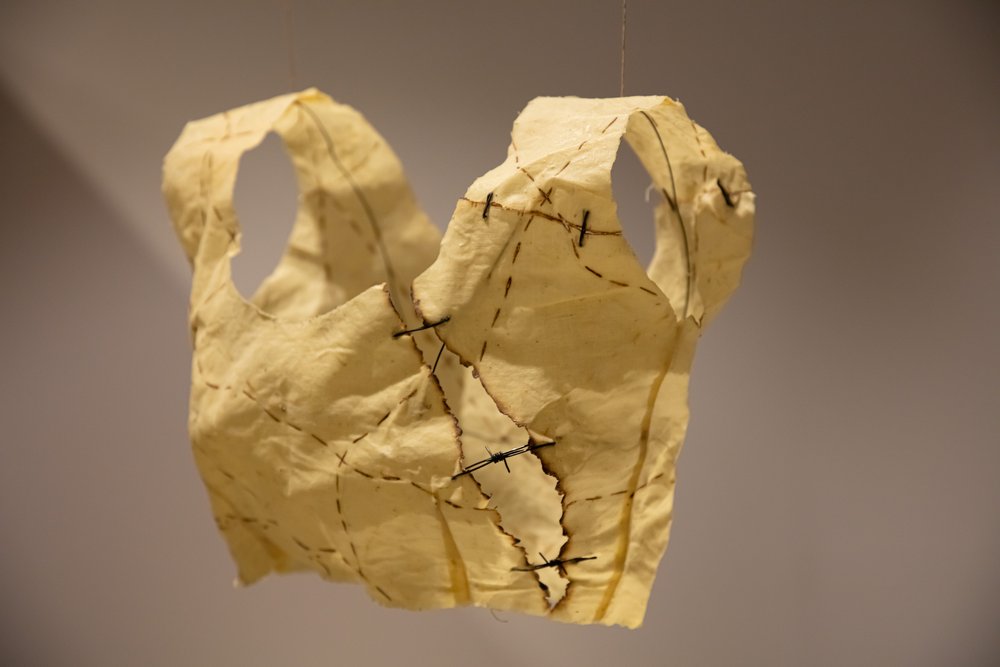
Pritika Chowdhry, Ringa Ringa Roses II, Tea-dyed khaddar cotton, burnt map lines, wire, wax. Courtesy of the South Asia Institute.
I was drawn to the spittoon, a vessel for expectorate as a carrier for memories. I used antique spittoons from the 1920s, which are relics of the early 20th century, as containers of memory, and hand-engraved maps, names of revolutions, declarations of independence, and treaties onto their exterior. By transforming the spittoon into a memorial rather than a vessel to hide waste, the work counters attempts to obscure the violence of colonialism, while recognizing how knowledge of historical atrocities has been subjugated. While these events are historicized as isolated events, I propose their interconnectedness; the Irish and Indian freedom fighters supported each other as they fought for independence from their British oppressors.
South Asia Institute’s website.
DailyArt Magazine needs your support. Every contribution, however big or small, is very valuable for our future. Thanks to it, we will be able to sustain and grow the Magazine. Thank you for your help!